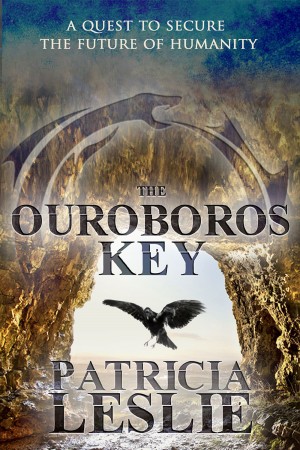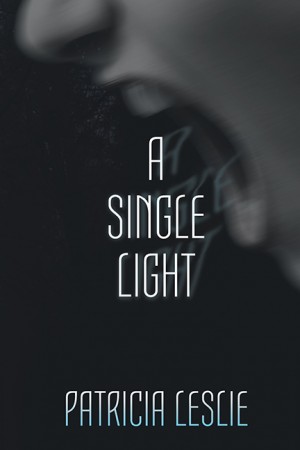Patricia Leslie is a Sydney-based author who was first published by Odyssey Books in 2014 with fantasy thriller The Ouroboros Key. She has since released the urban fantasy A Single Light, and is working on her third novel. Patricia is a visual writer and devotes time to exploring locations and allowing snapshot scenes to run through her head before combining them together into one story. In her spare time she is a dedicated, some say compulsive, reader and collector of books.
A little birdie told us you’re working on a third novel. Can you tell us a bit about it?
I have big plans for novel #3 starting with its size – it’s so large, the story will be shared over three volumes. This one is a historical urban fantasy thriller, quite probably with a little crime scattered here and there, and set over two islands: Australia and the Isle of Skye! The Australian volumes will be set in Sydney during the Victorian Era (so far, I’ve always been fond of time travelling stories) and I’ve been having a lot of fun researching architecture, Celtic history, food, fashion, household magic, current affairs, emigrant ships, sigil magic, gardens, and photography.
The story will involve the clash of magical families in a fight over magical relics and the balance of power in the Victorian and modern ages. There will also be some emphasis on gender and race roles (as a side theme or underlay) as I attempt to broaden the narrative of our history and bring in the voices that have not been heard, or worse, silenced.
Your first novel is set in America, while your second is set in Sydney. What are some of the challenges that come along with setting your scenes in such different landscapes?
Mostly distance. I was familiar with the American setting, as I participated in a student exchange program in Colorado when I was at school, and have made several return visits since then. For details that were less familiar, good old internet searches were used. There are some great images on Flickr and DesertUSA is a great site and forum for the southwest area. I also did a lot of reading on Native American history, particularly the ancient Mogollan and Pueoblo periods (it’s fascinating!) in order to incorporate a mystical, steeped-in history feel to some of the passages. I was lucky enough as well to complete a research road-trip through New Mexico, Utah and Colorado to check locations, weather, light, geography, flora, roads, people, and distances. Driving in America is very different to driving here and not just the whole driving on the other side of the road thing (which is scary enough) so it was a great learning experience. Seeing, touching, and feeling adds to a wholistic experience that you just cannot get on the internet or from books and which goes into being able to write about, and place characters into, landscapes.
A Single Light is set in the area I grew up in so there were fewer challenges in my location research. My main concern was checking the geographical facts of the Royal National Park against my memories, some of which are based on experiences from over twenty years ago. As everyone knows, memory is not fact-based but impression-based so this was an important aspect of research. Being so close (I still live in the area), I was able to go on day trips to follow up on any sticky memories. Luckily, I tend to be a little pedantic about checking even the most minor of things as, while the general area remains largely unchanged, there was certainly a few distance issues that needed to be addressed. I was also able to spend some time listening to the sounds of the bush and pay attention to the ground underfoot.
Some of the challenges between writing the two settings included the differences in vegetation and geography. The Ouroboros Key is set in the New Mexico desert and the Rocky Mountains of Colorado and Wyoming. While the southwest desert can be comparable to Australian scrubland the plateaus and canyons are so much larger and, unless you’ve been there and walked around in it, you can’t really understand the scales involved. Of course, then there are the Rocky Mountains where scale, compared to Australia, just goes off the roof. Australian vegetation, or at least in the Royal National Park, is dense and sharp and noisy. The Park edges on to the Pacific Ocean and forms the southernmost border of metropolitan Sydney. Built-up suburbs are barely 20 minutes away, the city only an hour, and the place is crawling with tourists and bushwalkers. Yet it has its deep, dark places too, where the shadows are long and the bush will swallow you whole if you’re not careful.
National parks have long been the scene of grisly happenings. Do you think these areas attract the supernatural and the criminal, or do they just make great places to write about?
Both actually. They are the scene of grisly happenings because the bush is so thick and you can hide your guilty secrets with less effort than if you were up to no good in a built area. It’s easy to hide in the bush and easy to get lost. If you know the area and victims do not, then you have the upper hand, the control to intimidate and strike fear.
Most of the grisly happenings have also been in isolated pockets where fewer people travel, so there’s less chance of being found out. National Parks – aka the Australian bush – also have a mysterious persona, a potential for danger in an instant, which is why they make great settings for mystery stories. There’s so much at play with the landscape that building tempo through the use of setting just adds a whole new level of depth to a scene. Walking through the bush is not like walking through a cultivated landscape with flat paths and tamed shrubbery. Bushes have leaves that are sharp; the paths are all over the place, it’s alive with birds and cicadas, and animals you can’t see (snakes and lizards for instance). Even in the Royal National Park, so close to civilisation, the bush is chaos.
Both The Ouroboros Key and A Single Light would be classed as fantasy, but also have strong roots in the mystery genre. Why do you like combining the two?
Mainly because that’s what I like to read and I can’t help myself. I also enjoy literary fiction so I have to be careful about waxing lyrical on occasion (those scenes are often the first edited out). Mystery and crime fiction plays to the gritty, real world side of a story; the surface of what’s going on. Fantasy is the undercurrents, the suspicions and folk tales, legends and history. I like stories that combine the “doing” and the fast pace of the real world with the “being” and more mystic spiritual pace of fantasy.
Your novels also combine the real with the mythological. What prompted you to put these fantastical elements into a real-life setting, rather than creating your own world?
I’ve always been interested in the stories that aren’t heard; what is going on that we don’t know about. Our real worlds are so interesting and multi-faceted. If you look at a number of cultures, creation stories are fantastical and many have links or similar threads to the story. Our modern world is built on these creation stories. Our cultures have developed out of these stories and the search for purpose and understanding. Look at the history of our languages and the etymology of our words, look at our dialects, slang and idioms, our old-wives tales and tall stories. I really don’t need to create new worlds when the one we live in has so many layers to play with. When you really think about it, by handing the fantasy elements to realistic settings, I am creating a new world: a world in which magic, the surreal, and beings not like us are possible.
Creating a new world, especially from one that already exists, must take a lot of work. What’s been your favourite scene to research?
I have several, one of which was cut from The Ouroboros Key, but I love nonetheless. It was the lead in to Tiamet and Enki under the mountains in Mesopotamia (which also was interesting to research) and in A Single Light the end climactic scenes where I had to go to the exact location and almost step everything out to make sure the action stayed on solid ground (as opposed to stepping off the cliff edge) and the characters could move from point A to point B, again without falling in the ocean below.
As a female writer do you find it more challenging to write male protagonists, or is it easier?
It makes no difference. A person is a person is a person. I make sure that dialogue, body language, and responses to situations match the gender, experience, and personality of the character and that’s about it. It’s all about maintaining the flow of the story. In both The Ouroboros Key and A Single Light, characters have changed gender when I found the original didn’t quite fit my idea or balance of the story. The hard part is ensuring the experience and personality match. If they do then nearly everything else in the character’s development will fall in place.
Tell us a bit about your writing zone. Do you write at a desk, on a couch, atop a mountain…?
I have a desk in a corner surrounded by bookshelves and piles of books, papers, and clean clothes (the opposite corner of the room is the laundry). I do most of my writing there, usually on a Saturday afternoon. I also have an iPad that gets quite a workout at cafes and notebooks full of scrawl when typing just isn’t enough. I can often be found in the corner of my local café with notebooks, pens, some tome or other, and my iPad beavering away on research and short stories. Translating my scrawl later on gets difficult, but it’s all part of the creative (and editing) process. I would love to write on top of a mountain though…
We know you’re an enthusiastic book collector. Could you tell us about some of your most prized additions?
I have a few books from the late 1800s. I particularly like small publications with decorative covers. There’s something about the look and feel… My favourite cover is a 1905 copy of Enid and Nimue: the true and the false by Alfred Tennyson – gold embossed rosebush on green leather. One of my oldest is from 1883, The Professor at the Breakfast Table by Oliver Wendell Holmes. And I also have an early edition of The Grapes of Wrath by John Steinbeck and Goodbye Mr Chips by James Hilton (my favourite story, so sad). I have loads more that I pick up on casual forays in antique and collectable stores.
To finish up, how would you describe your writing style in three words?
Descriptive and prone to flights of fancy…

